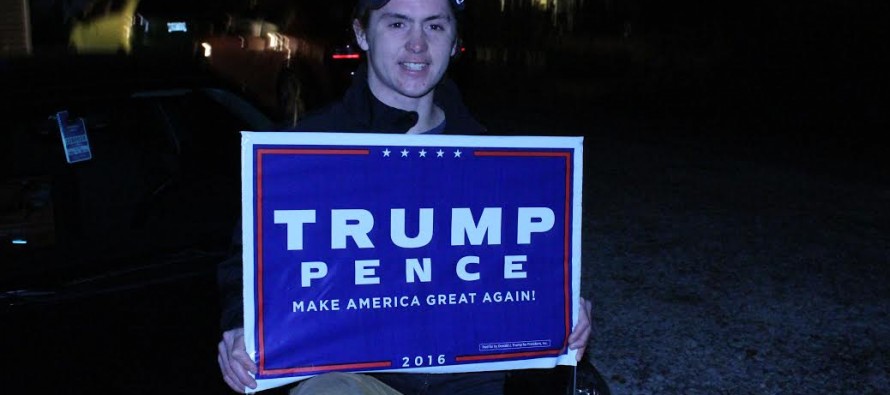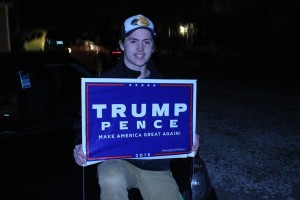Media works to the underdog’s advantage in U.S. election


A Windsor citizen poses with his Trump sign in contentment with the results of the American election. (Photo by Vanessa Cuevas)
By Ryan Jones
Media outlets and national polls were left in disbelief following the outcome of the 2016 U.S. Election.
Election Day was an important day for American citizens as they made their way to the polls to vote. Despite what American and Canadian broadcasting polls predicted, the outcome was different, resulting in millions of angry citizens.
Dr. Myron Hlynka, a professor of math and statistics at University of Windsor, said he paid close attention to the election.
“My reaction was one of surprise,” said Hlynka. “I thought that Clinton would win.”
The New York Times national polling average said Hillary Clinton had nearly 46 per cent of the population in her favour with an 84 per cent chance of winning. In contradiction, Donald Trump was elected president by gaining 290 electoral votes of a possible 538. Hlynka said this happened because the individuals polled did not give a true sample of random voters.
“The large issue is the hidden Trump vote,” said Hlynka. “Many people liked some of Trump’s ideas but were embarrassed by his statements. So they declined to be polled or answered incorrectly on purpose, but voted for Trump anyway.”
Sarah Dunphy, an American politics professor at the University of Windsor, said the media coverage leading up to the election also affected the final results.
“It affected the results poorly for Clinton because the media was making it sound like everything was working out well and Donald wasn’t qualified,” said Dunphy.


